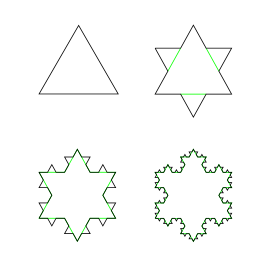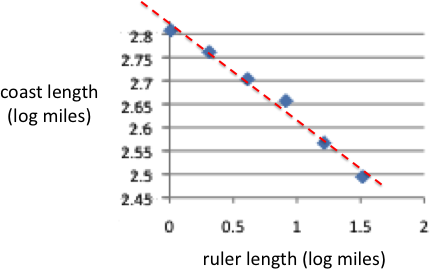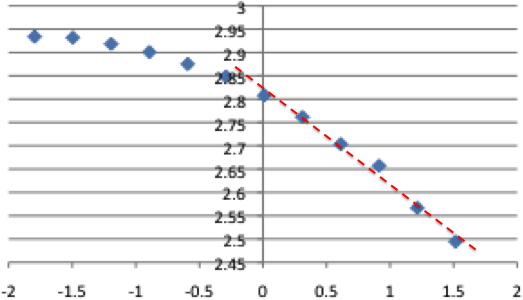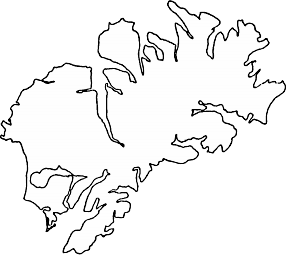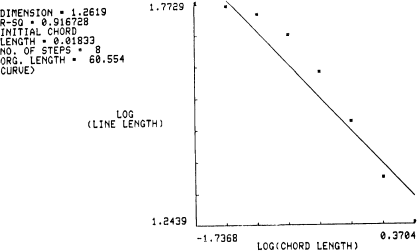A couple of weeks ago I was in Blacksburg, Virginia for a workshop called “Technology on the Trail“. CHCI, the Centre for Human Computer Interaction at Virginia Tech have an initiative of the same name and this workshop brought together academics and students at Virginia Tech. who have been working on the topic and four guest speakers from further afield including myself. Scott McCrickard was the organiser, but many others at VT led sessions, organised parts of the event or took part.
I was, of course, talking about the Wales walk, “Getting nowhere slowly: learning from a thousand miles at walking pace“, with a special slant on the tension between academic analysis of different themes and issues, and retaining a sense of the overall experience.
Amongst the other guests was Ellie Harmon. I was particularly excited to meet Ellie as she had been walking the Pacific Crest Trail at the same time as I was walking round Wales. Some years earlier she had also walked the Appalachian Trail. Her PCT walk was part of her PhD, which was an ethnographic study of the use of technology by long-distance walkers on the trail. I was particularly fascinated by the differences between the US long distance trails which are both substantially longer than the round Wales path (AT 2000 miles, PCT 2600 miles, compared to just over 1000 miles for Wales Coast Path + Offa’s Dyke), and also far wilder, with often several days between road crossings, and then some way down these to towns for resupply. However, they do seem far better way marked and constructed than large swathes of the WCP!
The third guest was Allison Druin, who I know from her work on co-design with children, but is currently part way through a two-year secondment to the US National Park Service as Special Advisor for National Digital Strategy. She has been applying similar co-design practices to the entire NPS! The NPS is not just responsible for the large ‘wild’ National Park’s themselves, but also swathes of land in cities, including the Lincoln Memorial. She described the way every national park has its own app, and her efforts to ensure that there are common platforms as well as more engaging experiences on them.
The final guest was Norman Su, who I’d not met before. He is at Indiana University, but is originally a city boy. His work from his PhD on has been on subcultures, so in Indiana he decided to look at hunters including learning to hunt himself, typically alongside children who were at a similar novice level. The hunters often feel quite culturally alienated by those from urban areas who find shooting game distasteful (albeit often happily digging into an intensively farmed steak). However, there are multiple sub-cultures within hunting itself, often defined by the technology they use, from those who use the most advanced weapons available, to those who use simple bow and arrow, or muzzle loading rifles. A key feature that emerged from his analysis is the idea of rules of a ‘fair chase’: pitting the skill of the hunter not just the raw technology against the animal, and also ensuring that any kill is a clean kill: one bullet — one carcass.
As well as talks by the guests, we had a number of workshop activity sessions including a role play taking a walk to the university duck pond as if it were a hike, and various design/brainstorming sessions looking at the synergies and conflicts between different stakeholders and potential technologies for use on the trail.
My chosen technology would be a small device with physical buttons (not touch screen!) and GPS, possibly integrated into a voice recorder. The buttons could be colour coded and allow you to simply tag a spot from a small pre-determined set (bad path, view, etc.) and perhaps leave a voice note. Later one can go back and add details, but while walking I’d like to just say “this is an interesting spot”, and move on.
One evening there was a small reception where students showed some of the projects they had been doing around the theme. This included cultural probes, text analysis of tweets about various long distance trails in comparison with their mission statements and a touch screen system to explore Ellis and my blogs about our walks.
The workshop concluded with a short walk to he t66 foot Cascades waterfall, where the white foam of the falls was beautifully framed by white ice sheets across the rock face. The photo below from virginia.org is clearly at a warmer time of year!
Reminders
There were so many conversations from things highly germane to the trail, to those more peripheral: Blacksburg’s single-screen, volunteer-run cinema’s Oscar nominee series, the nature of the Red Neck, the American Independence and Civil Wars (in the South, not utterly forgotten), and campaigning in the area at the last presidential election. Of course the latter things are not utterly independent of the workshop topic, as urban ideas of nature as object of preservation and leisure can often stand in conflict to more pragmatic rural connections to the land.
Aside from politics, there were two things I found myself mentioning repeatedly.
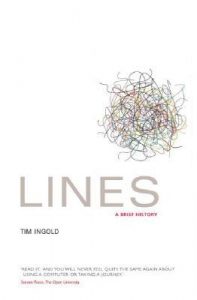 The first is Tim Ingold’s book Lines: A Brief History . Ingold’s thesis is that we have privileged the point or place in modern thought, seeing the connection as merely the means of getting from A to B. Ingold is an anthropologist and spent time studying reindeer herders. Their way of life is to follow the herds as they make seasonal migrations; for the tribes following the herds it is the way they follow, the path, the line, which is primary. Ingold has also edited a collection, Ways of Walking.
The first is Tim Ingold’s book Lines: A Brief History . Ingold’s thesis is that we have privileged the point or place in modern thought, seeing the connection as merely the means of getting from A to B. Ingold is an anthropologist and spent time studying reindeer herders. Their way of life is to follow the herds as they make seasonal migrations; for the tribes following the herds it is the way they follow, the path, the line, which is primary. Ingold has also edited a collection, Ways of Walking.
The other was MonmouthpediA.
Monmouth is a small county town on the border between Wales and England, but in 2012 it became “the world’s first Wikipedia town”. I am amazed at how few people in academia have heard of the project, indeed I probably would not have myself if it were not for the walk.
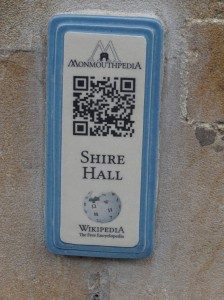 MonmouthpediA was a joint project between WikiMedia and various local councils and agencies, which included creating a special area on Wikipedia with entries for pretty much every building ad location in the town, free WiFi over parts of Monmouth, and, most significantly, small plaques with QR codes everywhere in the town linking to their MonmouthpediA pages.
MonmouthpediA was a joint project between WikiMedia and various local councils and agencies, which included creating a special area on Wikipedia with entries for pretty much every building ad location in the town, free WiFi over parts of Monmouth, and, most significantly, small plaques with QR codes everywhere in the town linking to their MonmouthpediA pages.
With the benefit of hindsight I think it would have been better if they had used an intermediary URL, rather like tinyurl, this would have the made it easier to remap codes to content, including, for logged in users, contextually (e.g. children’s content, treasure hunts). However, for it’s time it is truly innovative and I’ve not heard of anything similar elsewhere since.
As far as I know there is not yet a world’s first Wikipedia trail!
Issues and Themes
Reflecting on the various presentations, group workshop discussions and informal talks during the visit, a number of themes emerged for me.
Marks
Part of the Wales Coast Path publicity was that it was “Way Marked”, hence as a rule (see also below) of my walking I followed these first and only consulted the route on a map (another marking) when I got lost from the markers.
Several more experienced walkers I met on the way had walked US trails, or Camino de Santiago in Spain remarked (sic) on the different quality of marking.
Things Ellie said and discussions during the Saturday Cascades walk, emphasised different natures of the laid out, or beaten path on the ground.
Marked and Unmarked Lines
In the UK some long distance paths are waymarked, others deliberately not – you need to navigate to follow them … virtual paths. On Saturday Scott drove us “across the state line” (a phrase repeated so often in films) into West Virginia … a virtual line on the map, but also the road visible changed it’s character. We chatted on the walk about crossing the Equator and Arctic Circle – virtual lines, but ones with some physical identity, and the Greenwich Meridian, a purely arbitrary human line, but in Greenwich marked in the pavement.
The photo shows the Greenwich Meridian – marked on the ground and measured virtually with a GPS. However, the two differ as UK longitude-latitude is slightly different from GPS long-lat indeed about 100 yards different at Greenwich … measuring where you are on a curvy earth is not straightforward.
Classes/kinds of marks
- On the ground constructed – blaze, WCP roundels, direction signs, made paths
- On the ground accidental – worn paths, signs of previous fires, litter, natural landmarks
- On the map – lines or waypoints
- Guide books, etc – often through geographic coordinates (remembering that even long/lat have multiple definitions differing by up to a hundred yards on the ground … that’s over a cliff!), but also place names, and landmarks
The latter connects to a chapter I’ve been recently writing about the ways physical and digital (or read more generally imaginary/virtual) worlds are connected (QR codes, etc.).
Absence of marks and knowing you have gone wrong
One thing I noted early while walking was the importance of cues to tell you when you are not on the path. This also has parallels in information systems design – error detection is as important as error recovery, indeed arguably more important as you cannot recover if you don’t know you have gone wrong … lots of links here to undo and things.
Ellie mentioned the frequent white blazes on the trees on the Appalachian Trail, and so, when she accidentally went off trail, she noticed quite quickly because there were no white blazes on the trees.
Note that this relied on the reliability of the waymarks, so that their absence was actually a sign in itself (rather like silence in speech). The lack of this reliability was, in contrast, a major problem on WCP, where they only seem to mark the ‘significant’ points (e.g. where the path exited a large open space), and, in some areas, even these erratically!
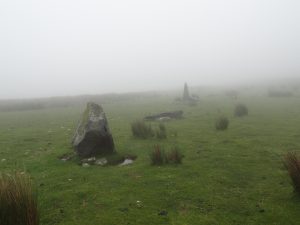 I recall one occasion (on the hillside about Fairbourne), where I was following a farm track and came to a gate. Straight onwards the path led beside a wall, but the farm track led through the gate. There was no WCP roundel on the gate, so I inferred that it was not the way to go … a big mistake that led to an hour or so wandering through thick mist on open moorland, criss-crossed with stone walls, that eventually led me round in an enormous circle! (N.B. climbing the walls would damage them, in most of the UK it is this kind of thing, not natural features, which limit navigation)
I recall one occasion (on the hillside about Fairbourne), where I was following a farm track and came to a gate. Straight onwards the path led beside a wall, but the farm track led through the gate. There was no WCP roundel on the gate, so I inferred that it was not the way to go … a big mistake that led to an hour or so wandering through thick mist on open moorland, criss-crossed with stone walls, that eventually led me round in an enormous circle! (N.B. climbing the walls would damage them, in most of the UK it is this kind of thing, not natural features, which limit navigation)
Hidden markers
 One reason the WCP markers were so small was, I think, so that they did not ‘mess up’ the countryside. Indeed, while I was walking, the Chair of the Long Distance Walkers Association, wrote a letter to members decrying the fact that on a couple of long distance paths, there had been incidents where someone had painted arrows on rocks to help guide walkers. As well as being criminal damage (remembering that there is little truly public land in the UK, only private land with rights of way), it also gave walkers a bad name. Although this was all perfectly correct, it was a point I pondered often as I struggled to find a 3 inch roundel across the far side of a field in the dusk or rain. The countryside is often far from ‘tidy’, full of fragments of baler plastic, discarded farm machinery, just about anything turned into feeders and water containers, and yet many in Britain have an image of the unspoilt rural idyll.
One reason the WCP markers were so small was, I think, so that they did not ‘mess up’ the countryside. Indeed, while I was walking, the Chair of the Long Distance Walkers Association, wrote a letter to members decrying the fact that on a couple of long distance paths, there had been incidents where someone had painted arrows on rocks to help guide walkers. As well as being criminal damage (remembering that there is little truly public land in the UK, only private land with rights of way), it also gave walkers a bad name. Although this was all perfectly correct, it was a point I pondered often as I struggled to find a 3 inch roundel across the far side of a field in the dusk or rain. The countryside is often far from ‘tidy’, full of fragments of baler plastic, discarded farm machinery, just about anything turned into feeders and water containers, and yet many in Britain have an image of the unspoilt rural idyll.
There are also good reasons for hiddenness. When the WCP crossed through built up areas roundels were attached to existing sign posts, but were rightly small as they are not relevant for the majority of people using the place (see meta-semiotics and Stanstead below). Indeed in some places, the normal 3 inch roundels, were reduced to small one inch ceramic disks and embedded into the pavement, very hard to spot even when you know they were there, but deliberately to be overlooked by those for whom they were not relevant … and also hard to vandalise.
I’m reminded too of Gypsy patrins (or patterans) and Hobo signs, which showed whether a house was a good one to beg at, or where other members of your group had gone, but were simple arrangements of stones or sticks that others would miss. The open WiFi chalk marks that sprung up in the late 1990s / early 2000s a similar example.
Rules
Norman’s hunters’ ideas of fair chase meant they created their own sets of rules about what was, or was not reasonable hunting practice. Ellie mentioned how some thru-hikers would not take a short cut when the path meandered up a mountain, or take alternative more scenic routes. I also had internal rules about conditions when I felt it OK to deviate from the set path: when I could get closer to the sea, or when I had got lost and it was ‘their’ fault (as in the WCP developers).
Information (in/about the land)
Rather like the marks for the path, information may be embedded in the land (e.g. the information board on the Saturday walk that told us about the old logging engine), or linked to it and presented elsewhere (guidebooks).
There are of course, digital versions of both these: public displays in location and smartphone apps, etc. linking from elsewhere.
I’ve a draft chapter about this for TouchIT (this chapter not yet online) about the different forms of linking (names, descriptions, QR codes, etc.)
Interestingly one of the distinctions for this is whether the points of linkage are physically inscribed in the land (e.g. QR codes for MonmouthpediA) or external to it (e.g. the PCT Halfmile waypoints).
In a project about ‘non-places’ (French philosopher Auge’s term), we had a meeting at Stanstead airport, and I became fascinated by the way signage sort of told you whether to there to read it or not, the meta-semiotics, of how to read a sign, who was intended to read it or not (see “not for itself: insider/outsider orientation of place and signage and systolic flows” ).
Names of places
This came up multiple times, not least whether a place having a name made it more significant. … interesting connections to place/space …
Flows
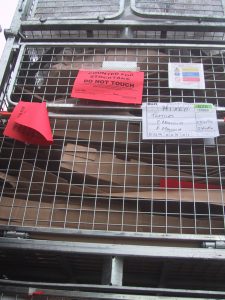 Another issue I first really became aware of in the non-places project, is about different flows human and material (I still have the photos of the back of a DIY store where we had another meeting).
Another issue I first really became aware of in the non-places project, is about different flows human and material (I still have the photos of the back of a DIY store where we had another meeting).
As human flows are in space and time, for unconstrained 2D movements, you may never encounter those whose paths cross yours, but linear trails change this relationship. Passing people going the same way as you are, walking with them for a while, meeting people going the opposite direction, and those who live on the way (shop keepers, campsite owners, park rangers). There are also people who have walked the way before: flows along the same path, but at different times, leaving marks in the wear of feet, log books, guides, and even major motion pictures. This connects to another theme in my past work ‘absent presence’ the ways to be aware of others at the same place but different times.
People
One of the questions asked by a working group was “what are people”, and indeed we later had a workshop session focused laregely on identifying different stakeholder groups with interests about trails.
Here is one distinction (amongst others) that emerged from personal reflection prompted by Stavros Asimakopoulos’ grounded theory analysis of my blogs:
Egocentric/ people of life – These are the walker’s own individual community, linked to his personal existence. They are stable and long-standing, and largely geographically stationary but widely distributed.
Geocentric/ people of the land – These are the local community, people who live in the towns and places along the way. They are linked to a specific place. The relationships are typically fleeting, but the people themselves are largely geographically stationary and localized to the route of the path.
Tribocentric / people of the way – The walking community, who are connected to the path, not any particular place along it. The meetings are fleeting and the people themselves geographically dynamic. (Note: this is from Greek ‘tribos‘ – a beaten track or path. )

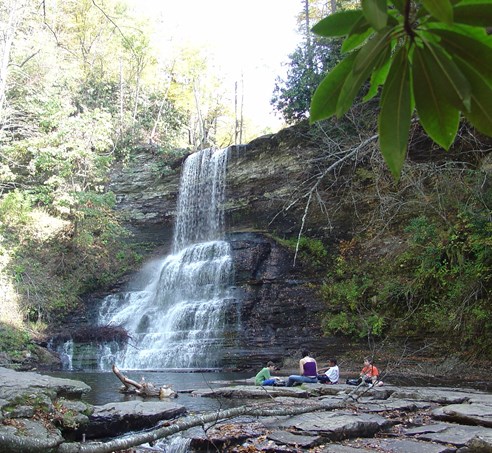
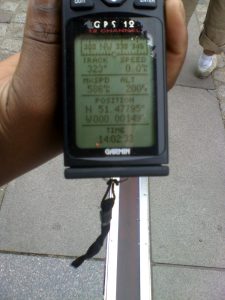
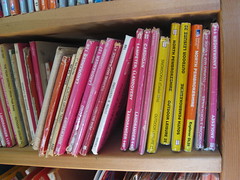


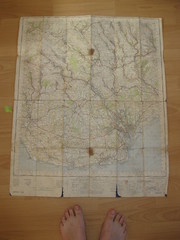

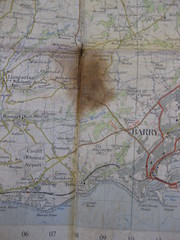

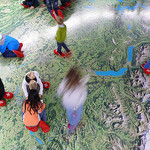
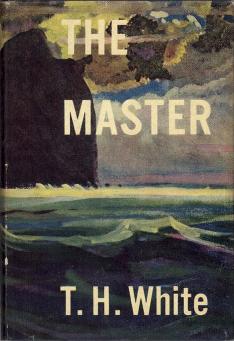
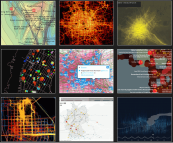



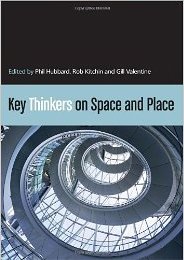 I was just reading the chapter on
I was just reading the chapter on 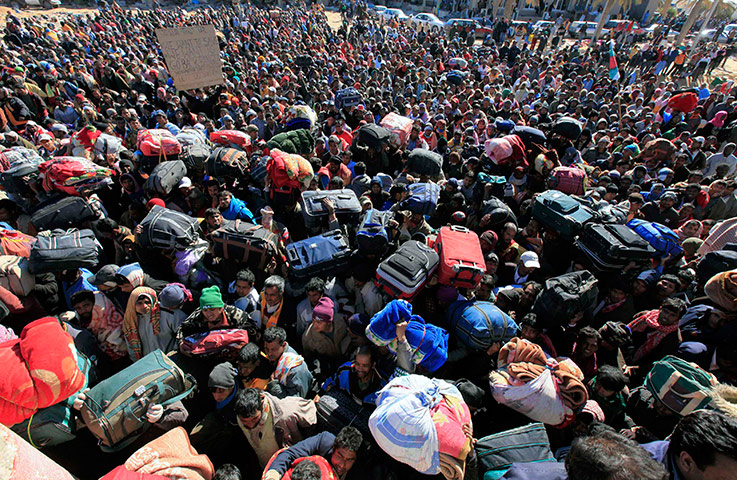

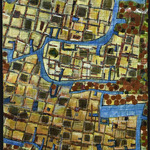




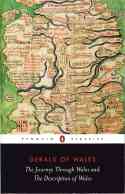
 Fractals are those shapes that are sort of similar however much you magnify them: the way individual branches or twigs, may look like a whole tree when set in a miniature landscape.
Fractals are those shapes that are sort of similar however much you magnify them: the way individual branches or twigs, may look like a whole tree when set in a miniature landscape.